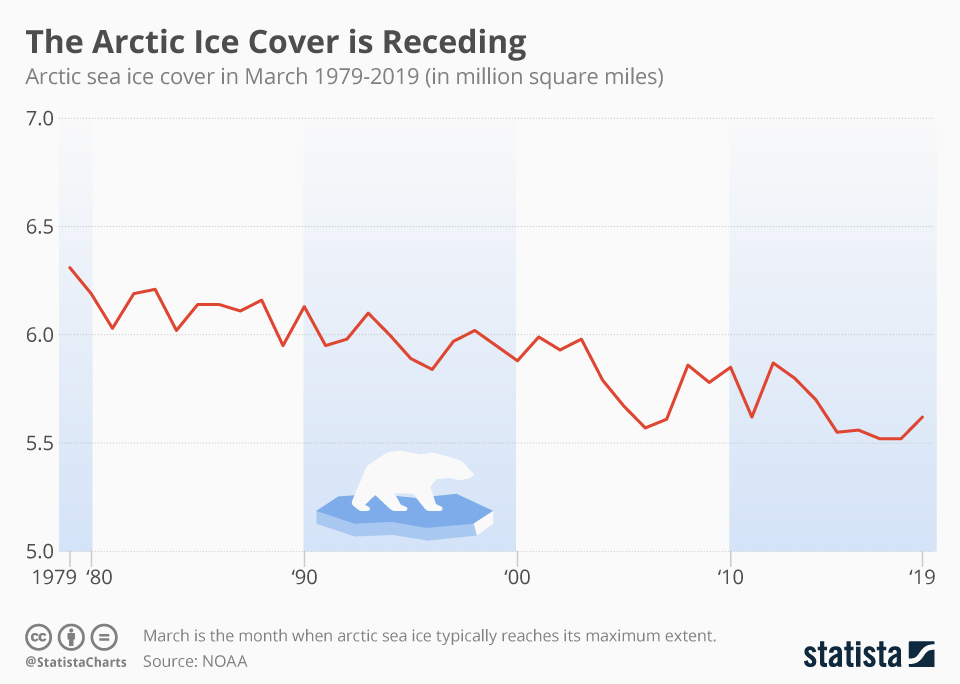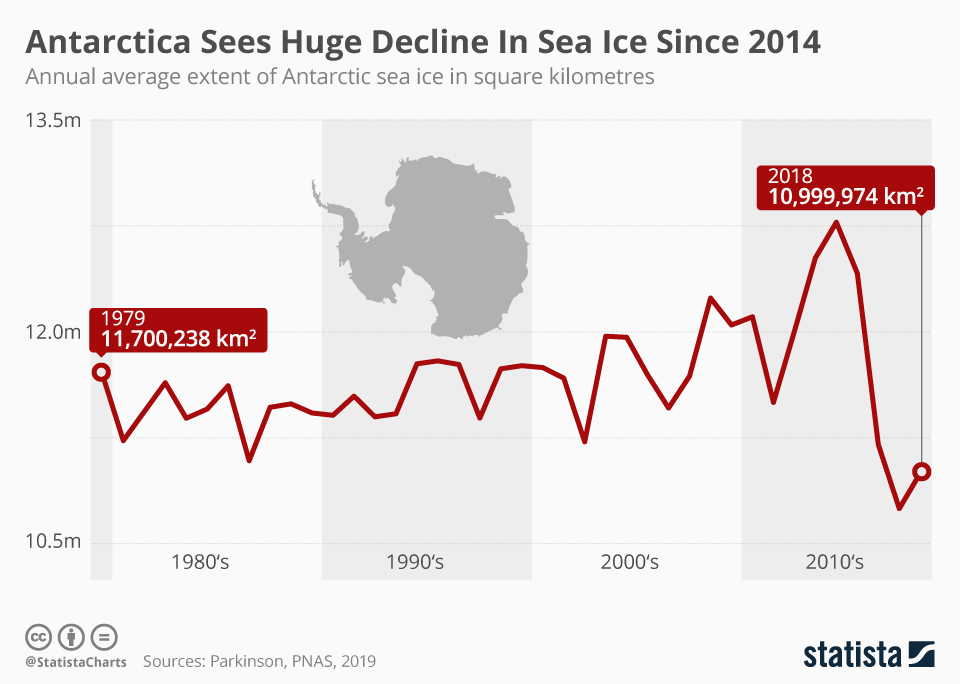Monday December 2nd… Dear Diary. The main purpose of this ongoing post will be to track United States extreme or record temperatures related to climate change. Any reports I see of ETs will be listed below the main topic of the day. I’ll refer to extreme or record temperatures as ETs (not extraterrestrials).😉
An Eye Opening Animated Update On Sea Ice Via Desdemona Despair
What catches the public’s eye, perhaps more than simple graphs and charts on climate change, are animations showing the retreat of glaciers and Arctic ice. The Desdemona Despair site recently has been doing a great job producing such animations, one which I will present today as the main subject. Also presented is a startling graph showing a big retweet of Antarctic sea ice since 2014. All of this should spur us on to do more to reign in carbon pollution:
https://desdemonadespair.net/2019/12/35-years-of-climate-change-in-one-video.html
35 years of climate change in one video
By Johnny Wood
18 November 2019
WEF) – Q: If you subtract 95 percent from something, what’s left?
A: An environmental crisis.
The “something” in question is the oldest and thickest solid layer of frozen water in the Arctic Ocean, which is melting so rapidly that just 5% of its original mass remains.
Scientists from the American Geophysical Union (AGU) have released a time-lapse video showing the ocean’s ice forming and receding over the past 35 years.
Scientists from the American Geophysical Union (AGU) have released a time-lapse video showing the ocean’s ice forming and receding over the past 35 years.

The region – which covers a 2,000 km arc from the western Canadian Arctic Archipelago to the northern coast of Greenland – will be the last to lose its perennial ice cover, climate models suggest. It could form an important refuge for species dependent on ice for their survival, ranging from tiny algae to mammals at the top of the food chain, such as polar bears.
But sea ice cover here is melting twice as fast as other places in the Arctic Ocean. An AGU study found as the region’s oldest, thickest ice disappears, it is being replaced by thinner, less stable ice that melts more easily.
The thickness of Arctic sea ice varies from year to year due to differing weather conditions, but reaches its maximum annual extent in March.
Researchers from the National Oceanic and Atmospheric Administration (NOAA) recorded a significant decrease over time in both the extent of ice cover and its thickness. In the 1980s, average March sea ice was more than 15.5 million square kilometres, but in recent years the average is closer to 14 million square kilometres.
A similar pattern is seen in the Antarctic, which has lost around a sixth of its ice cover since 2014. The region has lost as much sea ice in the past four years as the Arctic lost in the past 34 years.

AGU researchers have called the continued loss of Arctic sea ice a dramatic indicator of climate change.
Sea ice is thinning in two subregions of the Arctic, which have lost around a third of a metre in thickness each decade. Today’s average summer ice thickness is 1.5 metres thinner than it was in the 1970s.
The situation has implications for the rest of the planet, such as causing sea levels to rise and disturbing ocean currents and ecosystems.
According to NASA, the past four years have been the warmest on record and the planet’s average global surface temperature is now 1°C hotter than in the pre-industrial 1880s. Urgent action on a global scale is needed to avert an environmental catastrophe.
35 years of climate change in one video
Also:
Here is more climate and weather news from Monday:
(As usual, this will be a fluid post in which more information gets added during the day as it crosses my radar, crediting all who have put it on-line. Items will be archived on this site for posterity. In most instances click on the pictures of each tweet to see each article.)
(If you like these posts and my work please contribute via the PayPal widget, which has recently been added to this site. Thanks in advance for any support.)
Guy Walton- “The Climate Guy”